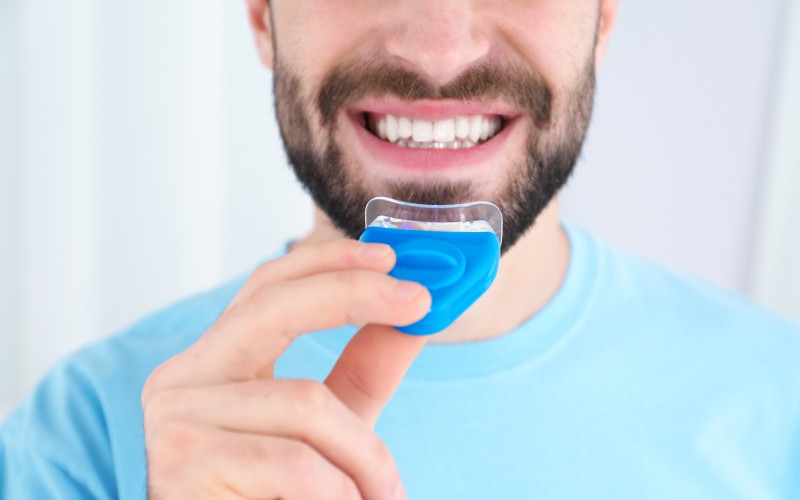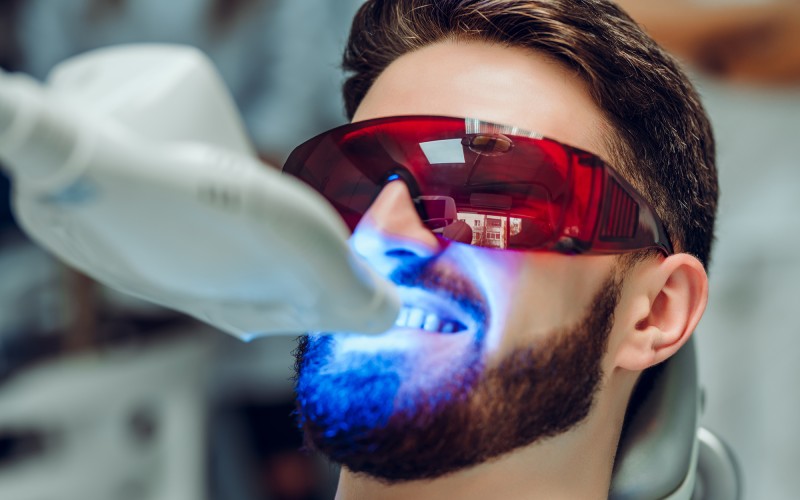Dreaming of a brighter smile? Teeth whitening could be a gift to yourself this season. But before you dive in, it’s essential to understand that results can vary widely. From the method chosen to your personal habits, several factors will determine just how brilliant your smile can be.
In this complete guide to teeth whitening, you’ll learn about the professional techniques used by dentists to measure and enhance the colour of your teeth. You’ll discover why starting with a clean slate is crucial and how plaque can affect your whitening results. Stick with us to uncover the ins and outs of achieving that coveted pearly white smile.
Why Teeth Whitening Is Popular
Appearance
You live in an image-conscious society where your appearance plays a pivotal role in first impressions, and your smile is often the highlight. Teeth whitening removes stains caused by coffee, tea, red wine, and tobacco, leaving your teeth several shades brighter. The outcome? A smile that is not only visually appealing but also perceived as a reflection of good health and hygiene. It’s a simple step that can have a transformative effect on how you look.
Confidence
The benefits of teeth whitening aren’t just surface-deep. A brilliant smile is often equated with self-assurance; it’s a physical expression that can elevate your confidence levels. When you’re pleased with your smile, you’re more likely to use it, right? Some people find that this increased confidence can ripple through different aspects of their lives, including work, relationships, and social interactions.
Types of Teeth Whitening Methods
Over-the-Counter Products
Over-the-counter (OTC) teeth whitening options are accessible and popular. You’ll find a variety of products such as:
- Whitening toothpastes and mouthwashes: These typically contain mild abrasives or chemicals that work to remove surface stains.
- Whitening strips and gels: Applied directly to the teeth, they contain peroxide-based bleaching agents that can penetrate the enamel to reduce deeper stains.
- Whitening trays: These involve filling a mouthguard-like tray with a gel whitening solution—which contains a peroxide-bleaching agent—and wearing it for a certain period.
OTC products are economically priced and when used as directed, they can improve the whiteness of your smile. It’s worth noting that results can vary widely based on the strength of the bleach and the user’s tooth discoloration level. Remember, OTC gels and strips often take longer to see results compared to professional treatments and require consistent use over days or weeks.
Professional Whitening Treatments
Professional treatments are administered by dentists and are characterized by:
- Higher bleaching concentration: In-office whitenings use stronger bleaching agents than OTC products leading to quicker, more pronounced results.
- Accelerators such as lights or lasers: These may be used during in-office procedures to speed up the bleaching process.
- Customizability and safety: Dental professionals provide customized treatment plans and necessary precautions such as gum protection to minimize sensitivity and maximize results.
The cost of professional treatments can be higher due to the expertise and equipment involved, but they can achieve significant whitening in as little as one session. Professional treatments include in-office procedures, which typically take about 90 minutes, and custom take-home trays that align closer to OTC methods but with stronger, professionally dispensed whitening agents.

Factors to Consider Before Whitening Your Teeth
When you’re contemplating teeth whitening, several pivotal factors need to be taken into account to ensure the best outcome for your smile. Your dental health, tooth sensitivity, and budget are among the most crucial aspects to consider before committing to any whitening method.
Dental Health
Your overall dental health is the cornerstone of successful teeth whitening. Having strong, healthy teeth and gums optimizes the effectiveness of whitening treatments and minimizes potential complications:
- Healthy Gums: Ensuring your gums are free from inflammation or disease is essential. Any gum issues could be exacerbated by whitening agents.
- Tooth Decay: Address any decay or cavities first, as whitening solutions can penetrate decayed areas, leading to heightened sensitivity or further dental problems.
- Existing Dental Work: Understanding that restorations like crowns, fillings, or veneers will not lighten with whitening treatments helps set realistic expectations.
Sensitivity
Tooth sensitivity can be a significant concern when considering teeth whitening:
- Pre-existing Conditions: If you have sensitive teeth, discuss options with your dentist who can tailor a plan that mitigates discomfort.
- Treatment Intensity: Choose methods that suit your sensitivity levels – home kits generally offer milder treatments compared to professional options.
- Desensitising Products: Integrating products designed to reduce sensitivity, such as toothpaste containing potassium nitrate or fluoride, can help manage discomfort during the whitening process.
Budget
Teeth whitening doesn’t have to break the bank, but it’s important to align your expectations with your budget:
- Insurance: Most dental insurance providers consider teeth whitening cosmetic, thus not covered, so you’ll need to plan financially for the total cost out-of-pocket.
- Long-term Value: Consider the longevity and maintenance required for the whitening method chosen to assess its overall value against the initial investment.
Steps to Prepare Your Teeth for Whitening
Teeth whitening starts long before you apply any gel or strip, or dental office visit. The preparation phase is critical in ensuring that the whitening process is both effective and safe. Let’s dive into what you need to do to get your teeth ready for a whitening treatment.
Dental Cleaning
Regular dental cleanings provide the foundation for successful teeth whitening. These professional cleanings remove the buildup of plaque and tartar that can’t be eliminated by brushing and flossing at home. A dental hygienist’s expertise ensures that your teeth are in the best possible condition for whitening by:
- Eliminating surface stains: Professional cleanings can remove stains caused by coffee, tea, or tobacco.
- Creating a uniform surface: Clean teeth allow for even application and absorption of whitening agents.
- Improving overall oral health: A clean mouth reduces the risk of gum irritation from whitening products.
The efficacy of your whitening treatment heavily relies on the cleanliness of your teeth. Therefore, scheduling a dental cleaning is an essential step before embarking on any teeth whitening journey.
Addressing Dental Issues
Before applying any whitening treatment, ensure that you’ve addressed all underlying dental issues. Whitening products should not be used on compromised teeth as they can exacerbate conditions such as:
- Tooth decay: Whitening can cause severe pain if you have cavities.
- Gum disease: Unhealthy gums can react negatively to whitening chemicals, leading to increased sensitivity and potential damage.
Consult your dentist to treat these issues first. Only proceed with whitening once your teeth are healthy and any existing dental work, like crowns or fillings, has been evaluated since these won’t respond to whitening treatments.
Reducing Sensitivity
Tooth sensitivity is a common concern with whitening treatments. Minimizing discomfort before and during the procedure can make a significant difference. You can reduce sensitivity by:
- Using desensitizing toothpaste several weeks prior to whitening sessions, which can help block pain signals from the tooth’s surface to the nerve.
- Avoiding extreme temperature foods: Cold and hot foods and beverages might increase sensitivity.
- Choosing the right product: Opt for whitening treatments formulated for sensitive teeth, which typically contain lower concentrations of active ingredients.
By taking these steps, you’re preparing your teeth to receive whitening treatments more comfortably. Remember, patient comfort and safety should always take precedence in cosmetic dental procedures.
In-Office Teeth Whitening Treatments
Professional in-office whitening procedures give significant results quickly and safely. Consider these treatments if you’re seeking immediate and significant results with the guidance of a dental professional.

Laser Whitening
Laser whitening signifies the cutting-edge of dental whitening technology, offering top-tier results.
- Rapid results: High-intensity light accelerates the bleaching process, often yielding immediate outcomes.
- Precision: Targeted application means areas of concern can be focused on specifically.
- Duration: While treatments can be slightly more costly, the longevity of results often justifies the investment.
It’s advisable for those seeking a premium and technologically advanced teeth whitening solution.
How to Maintain Teeth Whitening Results
Regular Brushing and Flossing
To maintain your gleaming smile after teeth whitening, consistent oral hygiene is vital. Regular brushing and flossing eliminate plaque and prevent stain accumulation. Brushing twice a day with a soft-bristled toothbrush and fluoridated toothpaste maintains the whiteness of your teeth, while flossing once a day helps reach the nooks between your teeth where a brush may not. This ensures a longer-lasting brightness and sustains oral health. Remember, proper technique maximizes the benefits of your routine.
Avoiding Tooth-Staining Foods and Beverages
Your diet plays a pivotal role in maintaining the whiteness of your teeth. Certain foods and beverages are notorious for causing stains, such as tea, coffee, and red wine. Using a straw when drinking these can help mitigate their staining.
Touch-Up Treatments
Even with impeccable maintenance, your teeth will eventually adopt new stains. Touch-up treatments are an effective way to combat this inevitability. Depending on the whitening method initially chosen, touch-ups may vary.
Are You Ready to Whiten?
You’re now equipped with the knowledge to choose the right teeth whitening option that suits your needs and lifestyle. Whether you opt for an at-home solution or a professional treatment, remember that the key to a long-lasting whiter smile lies in following the guidelines and maintaining good oral hygiene. Don’t forget that touch-up treatments can help preserve your pearly whites. By avoiding certain foods and drinks and sticking to a consistent oral care routine, you’ll ensure your teeth stay brighter for longer.


